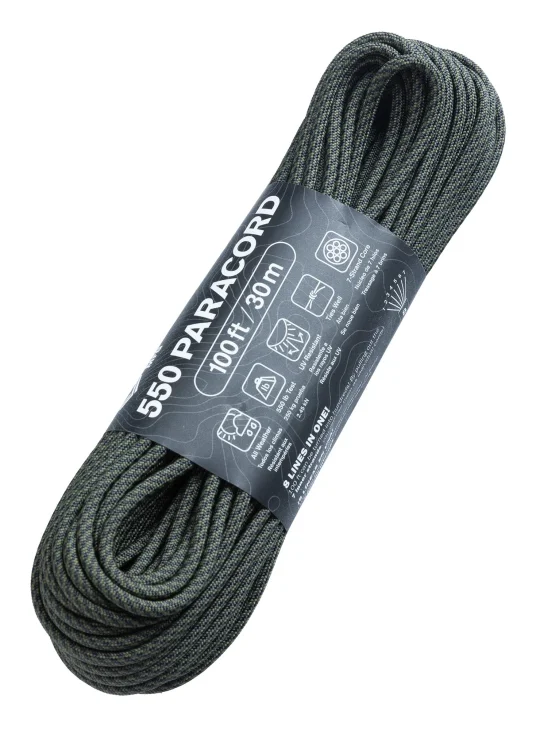
Paracord is one of the most versatile cords on the planet - and in space. With a proven track record dating back to WW2, paracord has made a well-deserved name for itself as being one of the best cords ever made. Sold in coils of 30.48 m / 100 ft.
Many purposes and ways to use
One of the most important design features of paracord is the core, consisting of 7 strands. Having a sheath and core are part of the recipe for high strength but that's not all! By pulling out the internal strands you can multiply the amount of usable cordage. Without the core strands, the sheath becomes thin and can be flattened, which can be utilized when making smaller paracord crafts like a zipper puller.
Type III is the second strongest variant of military-specified cord, most commonly referred to as 550 cord. With an incredible 249 kg / 550 lb tensile strength, Paracord can easily perform tasks and jobs that other similar cords cannot.
All these features make it the perfect rope to carry daily, whether it’s in your backpack, vehicle, garage, or in an apparel item. It was used by astronauts to fix protective insulation of the Hubble Space Telescope in 1997 so you might want to have some in the glove box of your space shuttle as well.
Can you use paracord for hammocking or climbing?
The short answer is no. While the numbers would have you believe it's OK, actual PPE and climbing ropes have much larger safety margins. Even in a hammock, you should consider that the load is angular instead of vertical, and paracord stretches 30% by design and military requirements for the rope. It is possible when no other option is available, but when you have the luxury of choice, buy something else for these purposes.
Karl R. en
Rory O. en